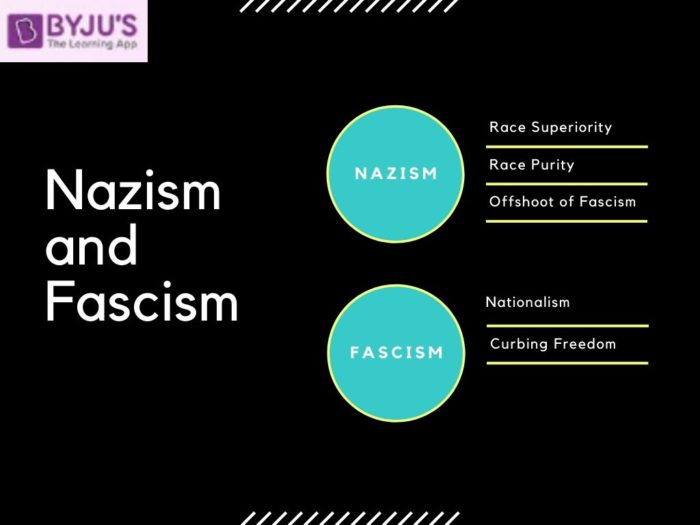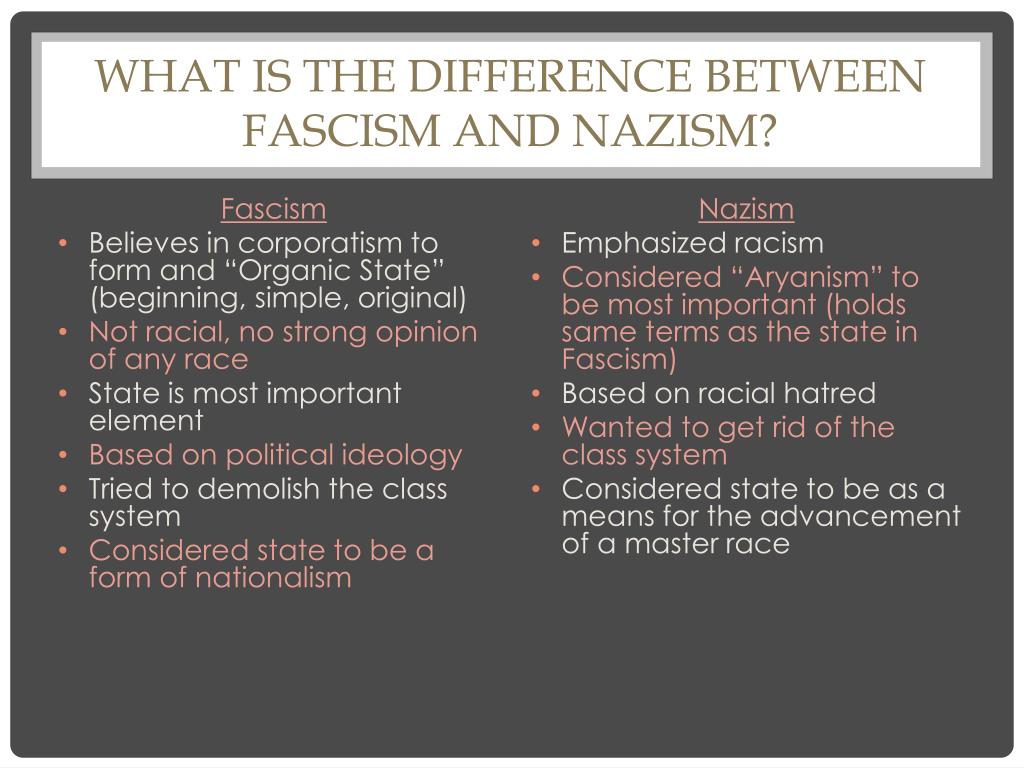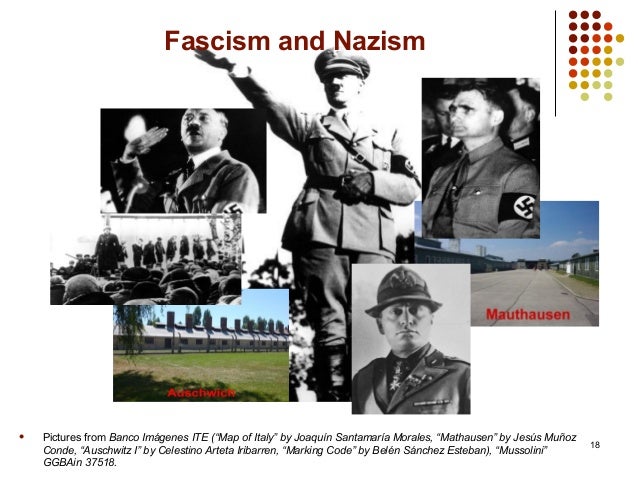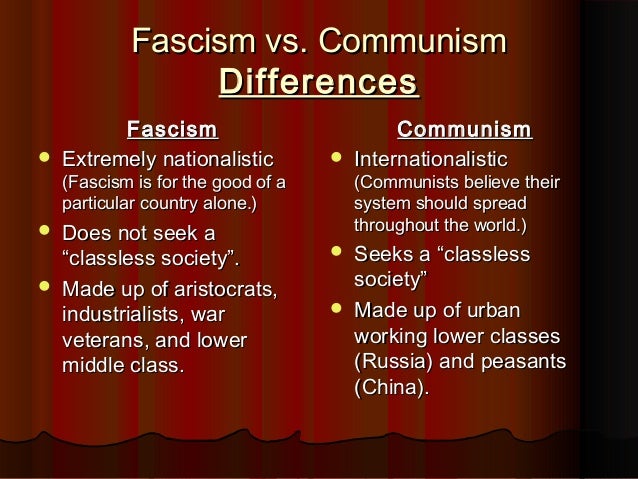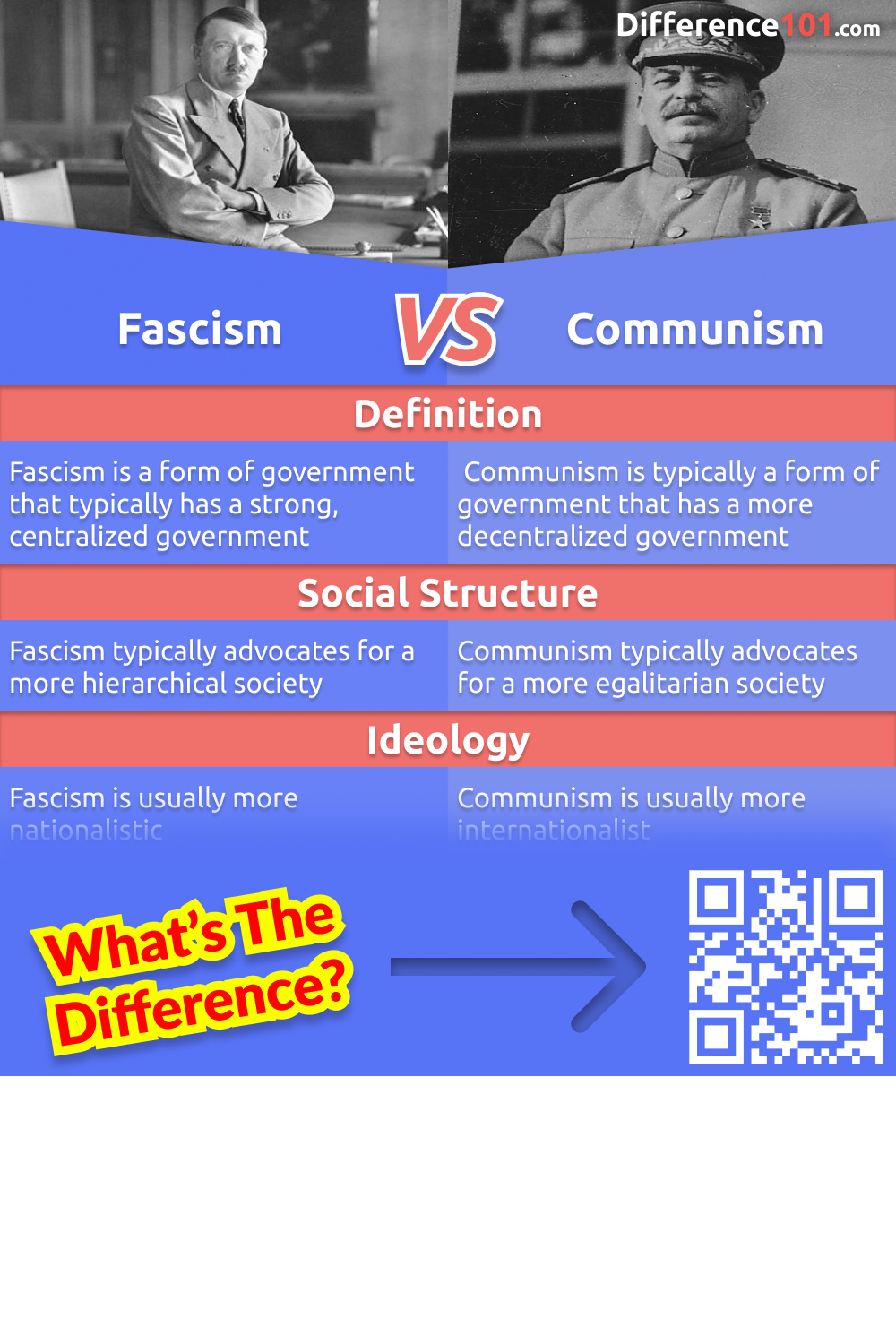Difference Between Nazism And Fascism Upsc

The specter of 20th-century totalitarian regimes continues to haunt contemporary political discourse. Often used interchangeably, Nazism and Fascism represent distinct, albeit related, ideologies that shaped the course of history with devastating consequences. Understanding the nuances between these systems is crucial, particularly for aspirants preparing for the UPSC examination, as it illuminates complex historical, political, and social dynamics.
This article delves into the critical differences between Nazism and Fascism, exploring their origins, core tenets, and historical manifestations. It examines their shared characteristics while highlighting the key distinctions that set them apart. The aim is to provide a clear and concise understanding of these ideologies, essential for a nuanced analysis of political history and contemporary political thought.
Origins and Ideological Foundations
Fascism, originating in Italy under Benito Mussolini, emerged as a response to the perceived failures of liberal democracy and the threat of socialist revolution after World War I. It promoted a strong, centralized state, national unity, and the suppression of dissent. The core tenets of Fascism included nationalism, authoritarianism, and a belief in the organic unity of the nation.
Nazism, or National Socialism, arose in Germany under Adolf Hitler. While drawing inspiration from Fascism, it added a distinct layer of racial ideology and antisemitism. Nazism also embraced similar themes of nationalism and authoritarianism, but it went much further in its obsession with racial purity and the concept of a superior Aryan race.
Key Differences: Race and Antisemitism
The most significant difference between Fascism and Nazism lies in their treatment of race. While early Italian Fascism exhibited some racist tendencies, race was not central to its ideology. Later, influenced by Nazism, Mussolini's regime implemented racial laws, but this was largely an adaptation rather than an inherent component of original Fascist thought.
In contrast, Nazism was fundamentally rooted in racial ideology. It posited the existence of a master race and demonized Jews and other groups as inferior and dangerous. Antisemitism was a defining characteristic of Nazism, culminating in the Holocaust, the systematic genocide of European Jews.
Hitler's "Mein Kampf" outlines the Nazi ideology, clearly indicating his racial beliefs. This text, therefore, is a good reference point when looking at the difference between Nazi ideals and those of other political movements.
The Role of the State and Individual Freedoms
Both Fascism and Nazism advocated for a strong, centralized state that controlled all aspects of life. However, their justification for this control differed slightly. Fascism emphasized the state as an end in itself, seeing the individual as subordinate to the collective and the glory of the nation.
Nazism, on the other hand, viewed the state as an instrument to achieve racial purity and expansion. The individual's value was determined by their perceived racial worth and contribution to the Aryan race. Both movements suppressed individual freedoms and promoted conformity to the ruling ideology.
Economic Policies
Both Fascist and Nazi regimes embraced corporatism as an economic model. Corporatism sought to organize society into sectors – employers, workers, and the state – working together for national interests. This was intended to replace class conflict with cooperation and control.
While both promoted state intervention in the economy, Nazism placed a greater emphasis on preparing for war and achieving autarky (economic self-sufficiency). This required extensive state control over production and resource allocation. Fascism's economic policies were somewhat less focused on aggressive military expansion at the outset, but still oriented towards nationalist goals.
Historical Manifestations and Legacies
Italian Fascism, despite its authoritarianism, did not initially pursue systematic extermination policies like the Holocaust. While it engaged in brutal suppression of political opponents, it was not driven by a genocidal racial ideology. Italian Fascism focused largely on the military goals of expanding the Italian empire and restoring it to what its followers thought was its former glory.
Nazi Germany's legacy is defined by the Holocaust and the devastation of World War II. The genocidal policies of the Nazi regime resulted in the deaths of millions and left a lasting scar on European history. The atrocities committed by the Nazis led to a global condemnation of racial ideologies and the establishment of international human rights norms.
The war crimes committed by the Nazis were addressed in the Nuremberg Trials, making the atrocities and Nazi ideals clear for the whole world to see. These trials were very important in shaping ideas around international law and justice.
Conclusion
While Fascism and Nazism shared common traits such as nationalism, authoritarianism, and state control, they differed significantly in their core ideologies. Nazism's emphasis on racial purity and antisemitism set it apart as a uniquely destructive force in history. Understanding these differences is crucial for comprehending the complexities of 20th-century history and analyzing contemporary political ideologies.
For UPSC aspirants, a thorough understanding of these ideologies is essential for tackling questions on political theory, history, and international relations. A critical analysis of these movements provides valuable insights into the dangers of extremism and the importance of upholding democratic values. Ultimately, comparing the historical context of Fascism and Nazism is useful to anyone trying to understand the current political climate and the dangers of political extremism.


